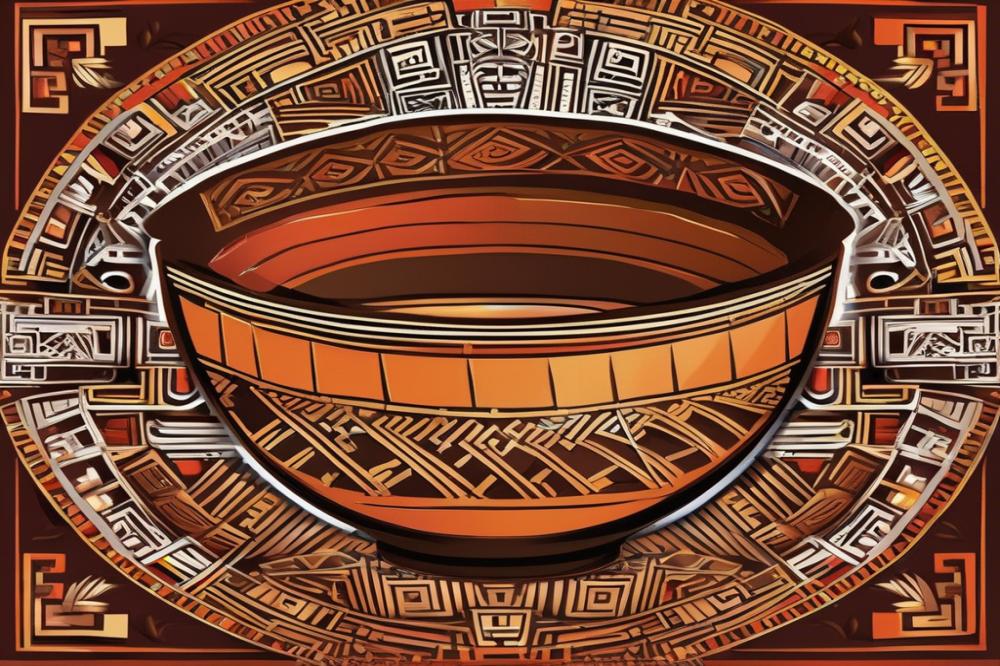Sweet and Savory: Exploring Traditional Mexican Foods Made with Chocolate
Origins of Chocolate
Chocolate has a rich and fascinating history that begins in Mexico and South America. Cacao trees thrived in the tropical climate of ancient civilizations. The Olmecs, one of the earliest cultures in Mesoamerica, were likely the first to cultivate cacao. Following them, the Mayans and Aztecs revered this plant, using it in sacred rituals and as currency. It wasn’t merely a food source; it was part of their identity.
Cacao’s Cultural Significance
In traditional Mexican culture, cacao holds immense importance. It symbolizes life and fertility. Ancient people believed it had mystical qualities. For centuries, chocolate was consumed as a drink flavored with spices. This drink was often enjoyed by nobility during ceremonies. This shows how deeply embedded cacao is within the culture and traditions of Mexico. Today, many still honor sacred practices surrounding its use.
Exploring the Flavors of Chocolate
The focus of this article is to explore both sweet and savory dishes that incorporate chocolate. mole is a well-known sauce that blends chocolate with a variety of spices, creating a depth of flavor that is both complex and satisfying. traditional recipes like tamales often include rich chocolate flavors. Chocolate drinks, such as atole, provide warmth and comfort, especially during colder months. Desserts, of course, take center stage too, showcasing chocolate’s sweet allure. From mole poblano to delightful pastries, the legacy of cacao is celebrated through many diverse dishes. Each recipe carries its own story and importance, revealing how chocolate enriches meals across the spectrum.
Embracing both the sweet and savory aspects of this beloved ingredient allows us to appreciate its versatility. There is much to discover within that unique blend of flavors. In the upcoming sections, we will delve deeper into these traditional foods made with chocolate, celebrating their cultural significance and culinary elegance.
The Historical Significance of Cacao

Cacao holds a vital place in the history of Mexico. For many indigenous peoples, it was much more than just a food item. Ceremonial rituals often featured cacao, serving as a sacred element during important occasions. It was used in weddings, religious ceremonies, and even as offerings to the gods. These practices highlight the deep-rooted cultural significance of cacao among ancient communities.
The journey of cacao beans to the modern chocolate we know today has been quite remarkable. Originally, cacao was brewed into a drink, flavored with spices and sometimes sweetened with honey. This drink was far from the sugary treats we are familiar with now. Over time, techniques evolved. The creation of solid chocolate products in the 19th century marked a significant change. However, traditional uses of cacao, like in mole poblano or in various chocolate drinks, still hold strong in Mexican cuisine.
Cacao was also crucial in trade and economics during pre-Columbian times. It functioned as a form of currency among various cultures. For instance, the Aztecs used cacao beans to buy food and essentials. This created a flourishing market centered around cacao that connected different groups. People would exchange cacao for goods like cloth and spices. The involvement of cacao in trade played a big part in the economy of ancient Mexico, influencing relationships between tribes.
Today, traditional foods still celebrate the legacy of cacao. Sweet desserts made with cacao delight locals and visitors alike. Savory dishes, such as tamales with rich mole, showcase its versatility. Even beverages like atole and chocolate drinks continue to thrive in households across the country. As such, cacao remains an integral part of both the cultural identity and culinary heritage of Mexico.
Mexican chocolate: Key Ingredients and Preparation

Creating traditional chocolate involves a fascinating process. Many people associate chocolate with sweet treats. However, in Mexico, it plays a vital role in numerous savory dishes as well. Artisans often begin by roasting cacao beans. This step enhances the beans’ flavor, making for a rich base. Freshly roasted beans are then ground, transforming them into a coarse paste known as masa.
The addition of spices elevates the flavor of this masa. Cinnamon contributes warmth and sweetness. Vanilla adds a fragrant note. Such spices are essential in recipes like mole poblano, where chocolate weaves through a complex tapestry of flavors. Other flavors can include hints of chili, nutmeg, or allspice. Each ingredient is carefully chosen to achieve a balanced taste.
Various types of cacao are used in traditional chocolate-making. Criollo is a prized variety, known for its delicate flavor and smooth texture. In contrast, Forastero beans have a stronger taste and higher yield, making them more common. Combining different cacao types can create unique flavor profiles suitable for both desserts and drinks.
Chocolate drinks hold a special place in Mexican culture. Atole, a warm beverage made from masa, can be enriched with chocolate to create a comforting treat. Sweetened chocolate drinks are often enjoyed during celebrations. Yet, the use of chocolate doesn’t stop at beverages. Savory dishes, like tamales, can also feature chocolate, bringing depth to each bite.
Traditional foods in Mexico showcase how versatile chocolate can be. Mole sauces enriched with cacao offer a rich, complex flavor to meats and vegetables. Desserts may include cakes, candies, and pastries that celebrate chocolate’s sweet side. Each dish tells a story of culture, tradition, and creativity, highlighting how integral chocolate is to Mexican cuisine.
Sweet Dishes Featuring Mexican chocolate
Mexican chocolate plays a pivotal role in various desserts. This rich ingredient brings depth and flavor to traditional foods enjoyed across the country. One of the most loved options is the classic hot chocolate. Made with dark chocolate, water, and spices like cinnamon, it warms the soul. People often serve it during the festive season, when families gather to celebrate.
Traditional Chocolate Drinks
Atole is another wonderful beverage made with chocolate. This thick drink blends masa (corn dough) with water and is flavored with vanilla and spices. Traditionally enjoyed at breakfast or during special occasions, atole captivates with its comforting texture. In many homes, these drinks are paired with sweet bread or tamales, further enriching the culinary experience.
Pairing Chocolate with Fruits and Nuts in Desserts
Chocolate also shines in various desserts that highlight fruits and nuts. Moles often incorporate cacao to create savory dishes that may surprise many. For instance, mole poblano is a famous sauce made with chocolate and served over chicken or turkey. The combination of cocoa with chilies offers a unique taste sensation that’s hard to resist.
When it comes to traditional sweets, many recipes showcase chocolate alongside fruits and nuts. Dulce de chocolate infused with nuts such as walnuts or almonds adds a delightful crunch. Pairing these with fruits like strawberries enhances flavors and textures. These desserts reflect the creativity of Mexican cuisine and its ability to blend different tastes.
Savory Dishes Incorporating Mexican Chocolate
Mole is one of the most iconic traditional foods in Mexican cuisine. This complex sauce has many variations, each with its own unique flavor profile. Mole poblano stands out due to its use of a variety of spices and a roasted blend of ingredients, including chiles, nuts, and yes, a touch of chocolate. It often accompanies turkey or chicken, creating a rich and savory dish that delights the palate.
The use of chocolate extends beyond mole. Tamales serve as another excellent example of savory dishes that incorporate cacao. Traditionally, these masa-based pockets can be filled with various ingredients like meats, cheese, and vegetables. Some versions even include a hint of chocolate in the filling, offering a subtle sweetness that complements savory flavors harmoniously. This interplay showcases how chocolate can enhance instead of overpower a dish.
Beyond tamales, chocolate drinks play a vital role in the savory repertoire as well. Atole, a warm beverage made from masa, is frequently served alongside tamales or other snacks. Spices like cinnamon and vanilla are often added, providing a comforting beverage that matches the richness of dishes like mole. The delightful mix of sweet and savory creates a well-rounded experience for those enjoying traditional foods.
In addition to those well-known dishes, many Mexican recipes explore the balance of flavors that chocolate brings. Salsas or sauces that incorporate spices and a hint of cacao can elevate any meal. You may find that these combinations often lead to exciting culinary discoveries. Traditional dishes transform into vibrant experiences when chocolate is involved.
Contemporary Interpretations of Traditional Mexican Foods
Modern chefs are reimagining classic dishes, creatively incorporating chocolate into their cooking. Traditional foods like mole have become canvases for innovation. The rich, complex flavors of mole poblano, often featuring a blend of spices and chilies, can now highlight chocolate in new ways. Chefs add a touch of cacao to enhance the dish’s depth and richness.
Combinations of sweet and savory are not just for traditional recipes. Tamales serve as another exciting avenue. Chefs are experimenting by adding cocoa to filling mixtures or creating chocolate-infused sauces to complement these beloved snacks. This fusion offers a fresh perspective on a staple food.
Chocolate drinks, such as atole, now receive modern twists. Some baristas mix traditional recipes with surprising ingredients. Hibiscus, vanilla, or even spices like cinnamon can create a new experience for every sip. Gastronomy enthusiasts enjoy discovering how these adaptations keep ancient practices alive while appealing to modern palates.
When it comes to desserts, the possibilities are endless. Puddings made with chocolate can be spiced up with chilies, creating a surprising heat that lingers after the sweetness fades. Fruit-based desserts also benefit from a dash of cacao or a chocolate drizzle, marrying familiar flavors with something unexpected.
Globalization has shifted how many perceive Mexican chocolate. International chefs often celebrate this ingredient in their kitchens. Through culinary festivals and pop-up restaurants, people are now more familiar with its unique depth. As traditional ingredients gain popularity worldwide, they begin to transcend geographic boundaries. This shift encourages more creative uses for cacao beyond its conventional roles.
Final Thoughts
Mexican chocolate plays a vital role in traditional cuisines. Its incorporation into both sweet and savory dishes sets the foundation for countless recipes. Mole, for example, showcases how chocolate can blend with spices to create rich flavors. Tamales also highlight the versatility of chocolate, often found in desserts but equally enjoyable in savory combinations.
The legacy of cacao runs deep in Mexican culinary practices. Cacao was once revered by ancient civilizations, serving as a symbol of wealth and power. Today, this precious ingredient continues to connect modern cooks with their heritage. Dishes like champurrado warm the soul, linking generations through shared recipes and experiences.
Exploring traditional chocolate dishes opens doors to a world of flavors. Each recipe tells a story, reflecting local customs and family traditions. Don’t hesitate to try these delightful foods. Savor the complexities and celebrate the rich cooking culture they represent.
Ultimately, taking the time to appreciate these unique culinary creations enhances our understanding of Mexican heritage. So next time you encounter a dish that features chocolate in an unexpected way, remember the history and artistry behind it.



